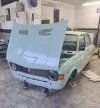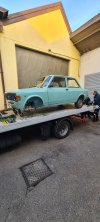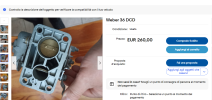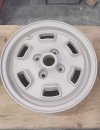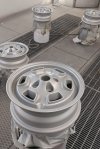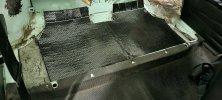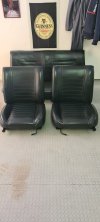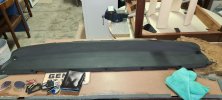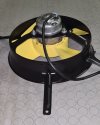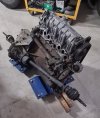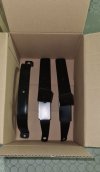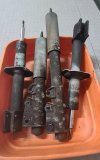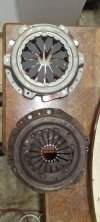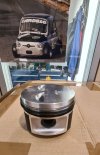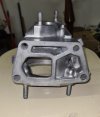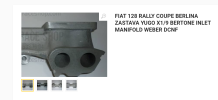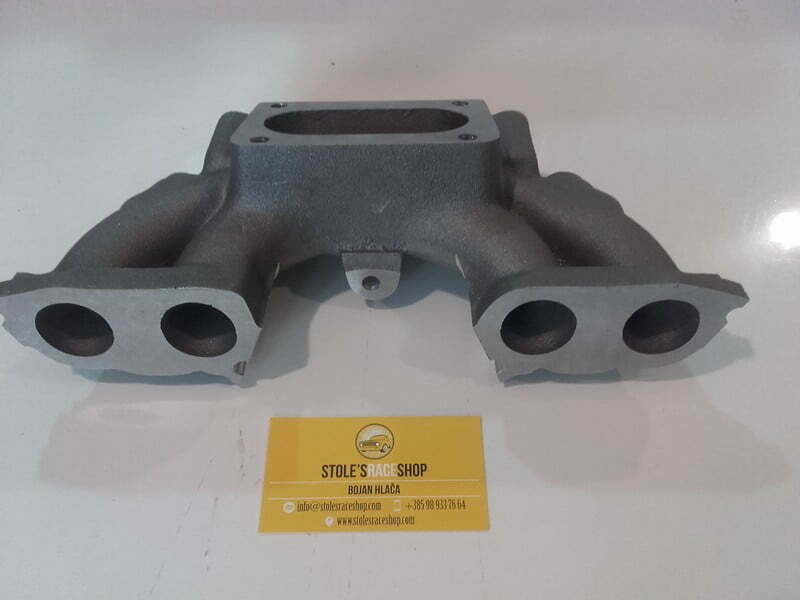The DGEV you pointed to at least has simultaneous throttle opening, therefore twin minimum jets, and twin (central but two outlets) accelerator pump sprayers ... so it's a step in the right direction... it would still need to be mounted in a similar fashion to the DCD or DCNF/DCNVA ... i.e. it wont suit simply mounting in the same base orientation as the DMTR, as it , once again, is designed for float pivot / float bowl "forward" , not sideways...
A DCNVA is a good improvement in airflow capability over a DMTR... a DCA for example (very similar to a DCNVA/DCNVH) is used on the volumex models of Lancia/Fiat, and they are conservatively rated at 135hp, so it will easily flow enough air to that level of tune on any engine... a 34DMTR maxes out about 120/125hp.
The beauty of it for a single application IMO is the removeable chokes, and the idle mix screws / progression ports at the "rear" position of the carb which is simply the best overall position for even mixture distribution when fitted in the correct orientation using one of the manifolds described above, or modifying a standard manifold as I've shown... it's also a very simple throttle hook up as it maintains the same orientation as the stock DMTR linkage, off to the right hand side of the engine... the DCD and the DGEV would have the linkage to the rear, and need a bellcrank arrangement to rotate the throttle movement...
The 36 butterflies are a sensible step up from say twin 34's of the DMTR, and with twin 26 or 27mm chokes for a 1500 can get you over that 100hp at the rear wheels without too much fuss if the rest of the engine is built right... to get there with the standard carb orientation and a 34DMTR and 25/27 choke sizes is far more difficult and needs a lot more "finessing" to get there..
If you live in a climate where the choke isnt needed, you can simply lop the standard choke flap and the whole carb top off flat and install a regular DCNF bellmouth...
this particular carb is a DCA, as I wanted the power valve... It has AN type fittings added for fuel inlet and return, as the DCNVA only has a single pressed in brass inlet, which I removed, threaded the hole and added the AN fitting, the return I simply used a banjo bolt the right thread to screw into the usual large brass plug that holds the internal filter in place and added another tight radius 90 AN fitting for the fuel return.
it has a DCNVA modified top fitted to it, it to suit a regular 5 1/8 base K&N air box you can see in the background of this next picture where you can also see the original fuel inlet tail
Yes the DCNVA has two vacuum points, one above and one below the throttle plates, so you could use either ported or manifold vacuum for ignition adavnce... the one below the throttle plates usually hooks up to the choke pull off capsule mounted on the side, but the hose is not fitted in this picture
This is a short video of my linkage setup for this carb/bellmouth on an X19 racecar ... using a linkage rod from an automatic car that originally was for additional throttle movement to pull the auto kickdown cable... I've employed it to prevent stretching / snapping the throttle cable if there were too much force applied to the pedal... (which happens in racing) the linkage rod simply stretches in overall length and then returns to normal
SteveC

